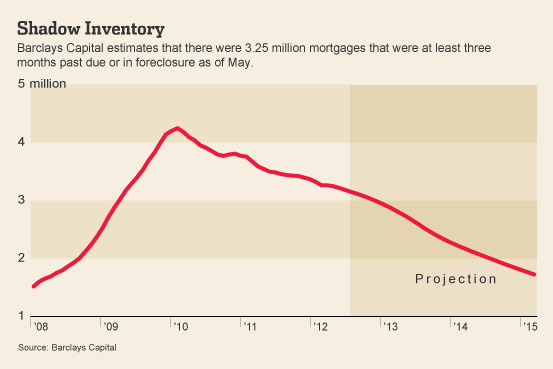(WSJ) -- The housing market is improving because there are more buyers chasing fewer homes. Skeptics of a housing bottom, however, often point to a scary set of numbers: the “shadow inventory” of potential foreclosures—the millions of mortgages that are either in foreclosure or in default.
It’s true that home prices are unlikely to see brisk gains once they do hit bottom because it will take years to absorb this glut. But will this phantom inventory derail the incipient housing bottom? Maybe not, say a number of housing analysts.
There are several reasons why the shadow inventory isn’t as scary as it sounds: It’s concentrated in a handful of markets—it isn’t inherently a national phenomenon. It is being offset by improved demand, particularly from investors. And the housing vacancy rate is low, a product of very little new home construction over the past few years that could counterbalance continued high inventories of foreclosed homes.
We’ll address each of those in subsequent posts. But first, let’s examine the actual size of the shadow inventory. While the shadow is very large, one often-overlooked fact is that the shadow isn’t nearly as large as it was two years ago.
There are a wide range of estimates of shadow inventory. A common measure are loans that are either in the foreclosure process or that are three months or more delinquent. These are mortgages that are among the most likely to ultimately become bank-owned properties.
Barclays Capital estimates that at the end of May there were around 1.8 million mortgages in the foreclosure process and another 1.45 million where borrowers have missed at least three payments. That puts the total number of properties that could be repossessed and resold by banks at around 3.25 million mortgages.




